VENICE: A guide for music fans
Visit destinations to classical music and opera art with a historical reference. Learn exciting ideas and background information.
1
MAP
Here you can find the locations of all described destinations on Google Maps.
1
2
LIVE AND WORK OF ARTISTS IN VENICE
Many famous composers like Rossini, Donizetti, Verdi or Stravinsky composed for the opera house la Fenice.
2
3
CONCERT HALLS AND OPERA HOUSES
The Fenice is the most famous and important theater in Venice. Read interesting information about the dramatic history of this theater.
3
4
CHURCHES
The St. Marks Basilica is also famous for its music. Do not miss the Assunta which inspired Wagner and Santa Maria della Salute which was inaugurated by Monteverdi.
4
4
PALAZZI
Get to know where Wagner died.
4
5
TOMBS AND GRAVES OF FAMOUS MUSICIANS
Two famous musicians are buried in Venice
5
6
RESTAURANT
Go to Richard Wagner’s favourite place to drink a cup of Coffee.
6
7
WORKS RELATING TO VENICE
Hear three pieces from Monteverdi and Rossini
7
MAP OF TOUR GUIDE DESTINATIONS
Zoom in for travel destinations:
LIVE AND WORK OF ARTISTS IN VENICE
Claudio Monteverdi
In 1613, the 46-year-old Monteverdi found himself in difficult economic circumstances. His underpaid job as maestro at the court of Mantua was on the line because the new duke was not a lover of the arts like his just-deceased predecessor. So it came in handy for Monteverdi that the position as music director of St. Mark’s Cathedral became vacant. In this important position he found the artistic and economic recognition he had been seeking.
When the plague struck in 1632, he lost his son and became ill. After his recovery, under the impact of the plague epidemic, he had himself ordained a priest.
L’incoronazione di Poppea a work for the carnival and the first civic opera
Already over 70 years old, he reinvented himself once again when Venice opera opened up to secular themes and needed operas for the carnival season. The opera was independent of a court theater and was attended by a middle-class audience seeking entertainment during the carnival season. He abandoned the usual mythological material and wrote the scathing satire “L’incoronazione di Poppea.” One of the most successful creations was the Amme Arnaulta, sung by a castrato, making Monteverdi, appropriately for Venice’s carnival season in 1643 at the age of 76, the inventor of the drag queen (more on this in the digression in the music section of this guide). The theater of the first performance, San Giovanni e Paolo, no longer exists. Shortly after the first performance of the “Incoronazione” Monteverdi died in Venice.
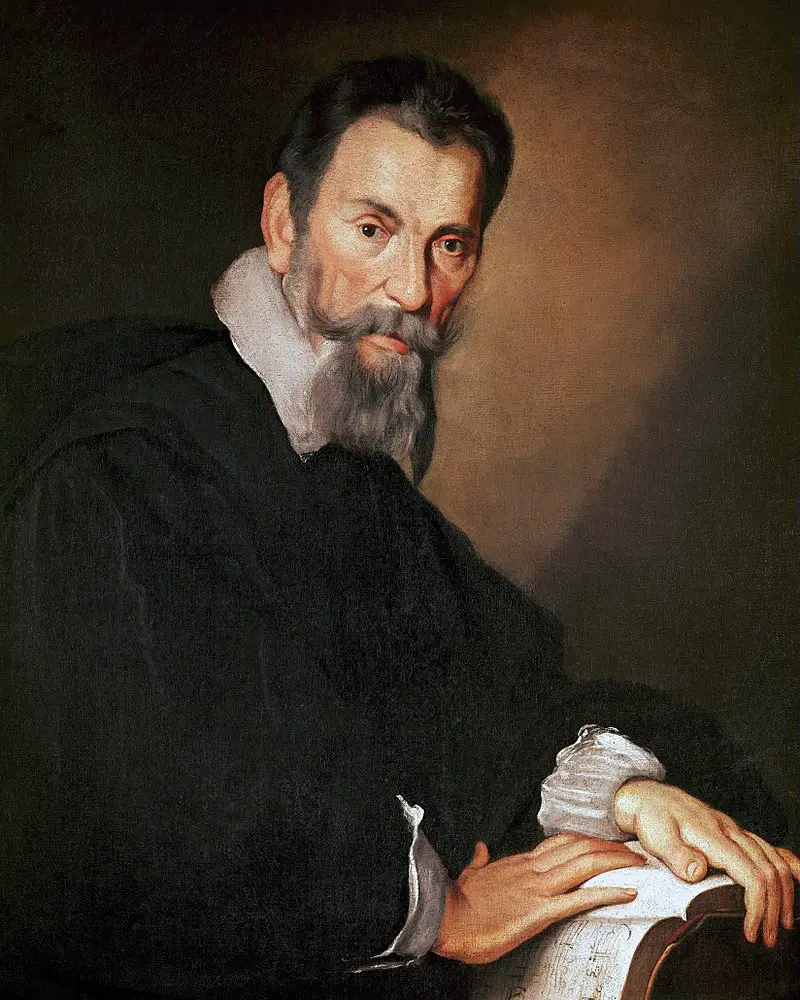
Gioachino Rossini
Venice was the gateway for Rossini’s career. He arrived in Venice at the age of 18, wrote various comedic one-act operas for the smaller theater.
With the commissioned works for the Venetian Teatro San Moisè, Rossini developed at a breathtaking pace into a leading opera composer. In this renowned theater, for which Vivaldi had already written, he wrote several one-act operas in a short time. Even the first commissioned work (“La cambiale di matrimonio”), which a family friend had arranged for the 18-year-old, was a success. The overture of the one-act opera “Il signor Bruschino” achieved anecdotal fame, in which the second violins have to tap their bows rhythmically on their music stands several times, producing a charming effect. The upscale gentlemen at the music stands, however, were too embarrassed by this effect of the 18-year-old schnoz and refused to perform the tapping sounds, causing a considerable uproar.
At the age of 21 received a commission from the great Fenice and made his breakthrough with “Tancredi”, leaving the lagoon city for Naples.
There are not many traces of Rossini left in Venice, the Teatro San Moisè is demolished, the Teatro San Benedetto (the premiere theater of the “Italiana in Algeri“) has been a cinema for ages (Multisala Rossini), only the Fenice is still standing.
The young Rossini in his Venice years:
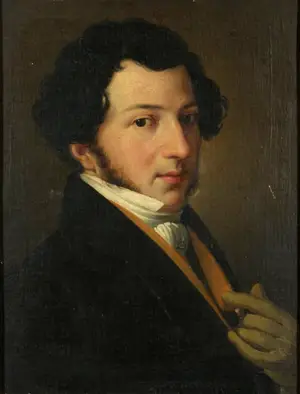
Igor Stravinsky
Stravinsky, the famous composer of “L’oiseau du feu” and “Sacré du printemps” had a special relationship with Venice, he loved this city, but he never lived there. When he visited Europe for the first time after the Second World War – he had spent the war and post-war years in the USA – Venice was the first stop. There, at the Teatro alla Fenice in 1951, he conducted his most performed opera, “The rake’s progress.” It’s a strange opera, like a throwback to times past, with harpsichord-accompanied recitatives and music that, in this atonal age, is oddly tonal in composition and at times reminiscent of Mozart, Handel and Donizetti.
Stravinsky with Dhiaghilev:
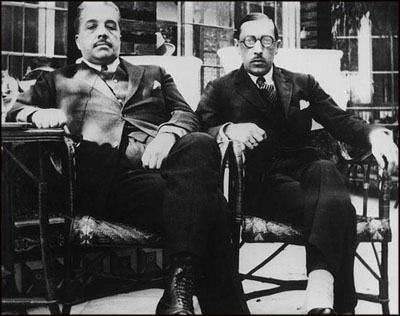
Giuseppe Verdi
The Lagoon City had the honor to premiere two of the greatest Verdian operas at the Teatro la Fenice, the “Traviata” and the “Rigoletto“. One of them became an announced fiasco and the other a surprising triumph. There were only two years between them. We will talk about the fiasco in the musical section at the end.
Not much remains of Verdi’s traces in Venice, all the more his work is cultivated.
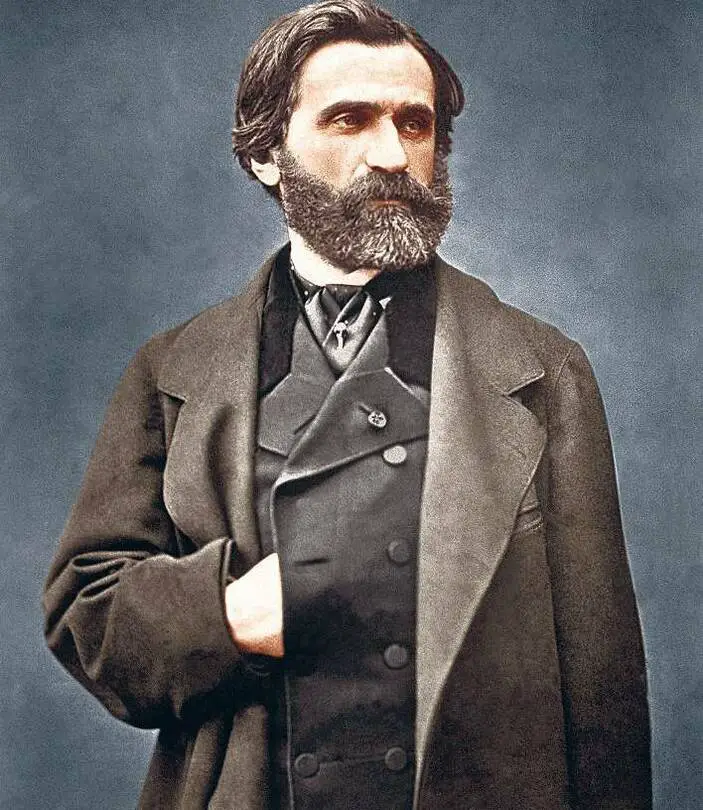
Richard Wagner
Wagner visited Venice half a dozen times. He often stayed briefly at the Danieli and then took up quarters in another place. In 1858 he visited Venice for the first time and had his grand piano brought over the Alps from Zurich, where he composed the second act of “Tristan und Isolde” in the Palazzo Giustiniani.
Four more visits took him to Venice in the following 30 years. Finally, he met his death in Venice.
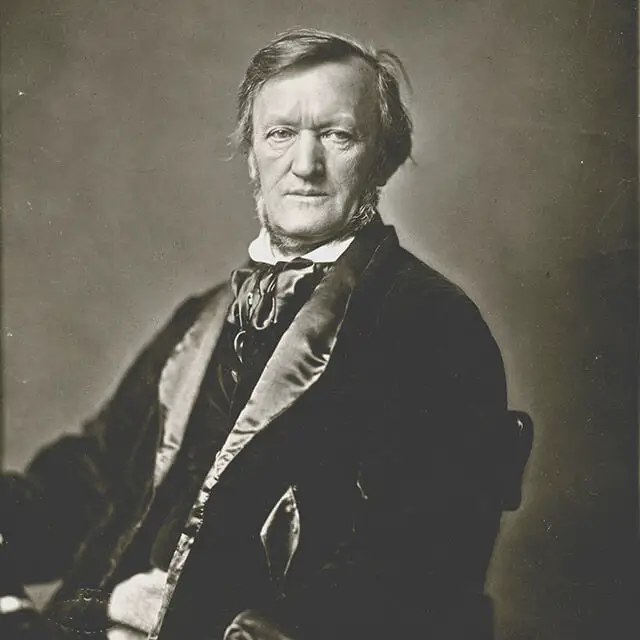
CONCERT HALLS AND OPERA HOUSES
Teatro la Fenice I/IV
The Fenice has a glamorous past. Premieres by Bellini, Donizetti, Verdi (including Rigoletto, La traviata and Simon Boccanegra), Rossini and Meyerbeer testify to the importance of Venetian theater.
The theater experienced a glamorous resurgence with the Biennale after World War II. Commissioned works led to premieres by Stravinsky, Berio, Prokoffiev and Britten made the Fenice an important artistic center.
Teatro la Fenice:
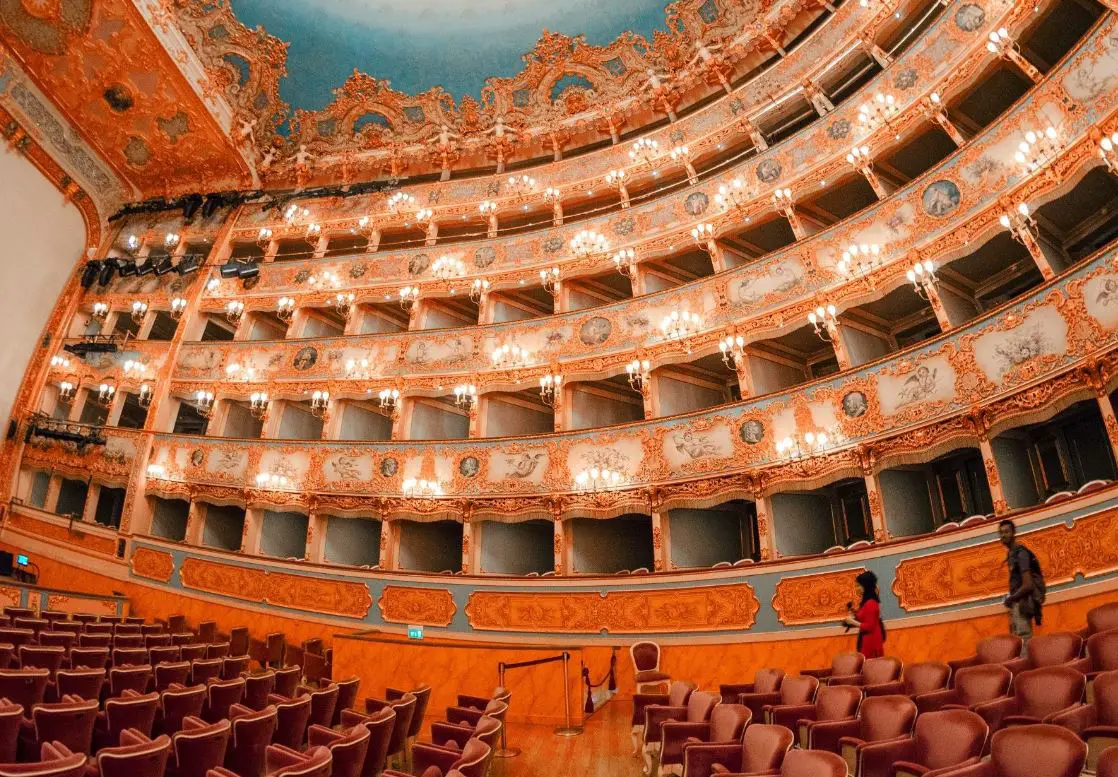
Teatro la Fenice II/IV
The theater was destroyed in 1997 by a fire intentionally set by workmen. Actually, the fire was supposed to be localized, but since the canals were drained for renovation, the fire department could not arrive fast enough. It was rebuilt true to the original and ceremoniously reopened in 2004 with the Traviata.
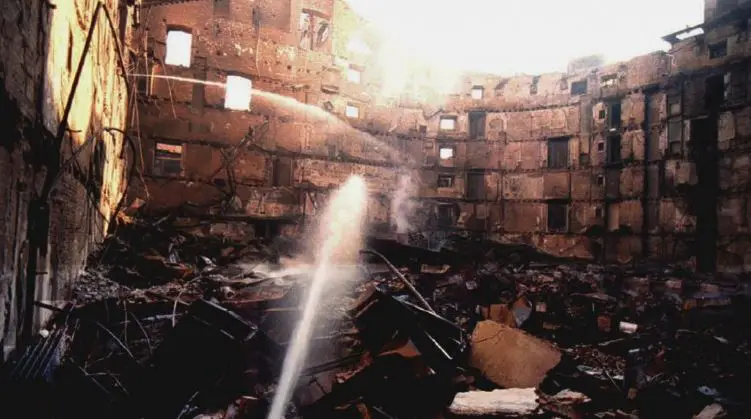
Teatro la Fenice III/IV
The facade is the only element that survived the two great fires of 1836 and 1997. The firebird, Phoenix, which made the theater rise again from the ashes after the destruction caused by the fire in 1837, is immortalized on the insignia of the theater and gave its name to the theater. The achievement was gigantic, the theater was reopened only a year after the fire on the 13th of December!
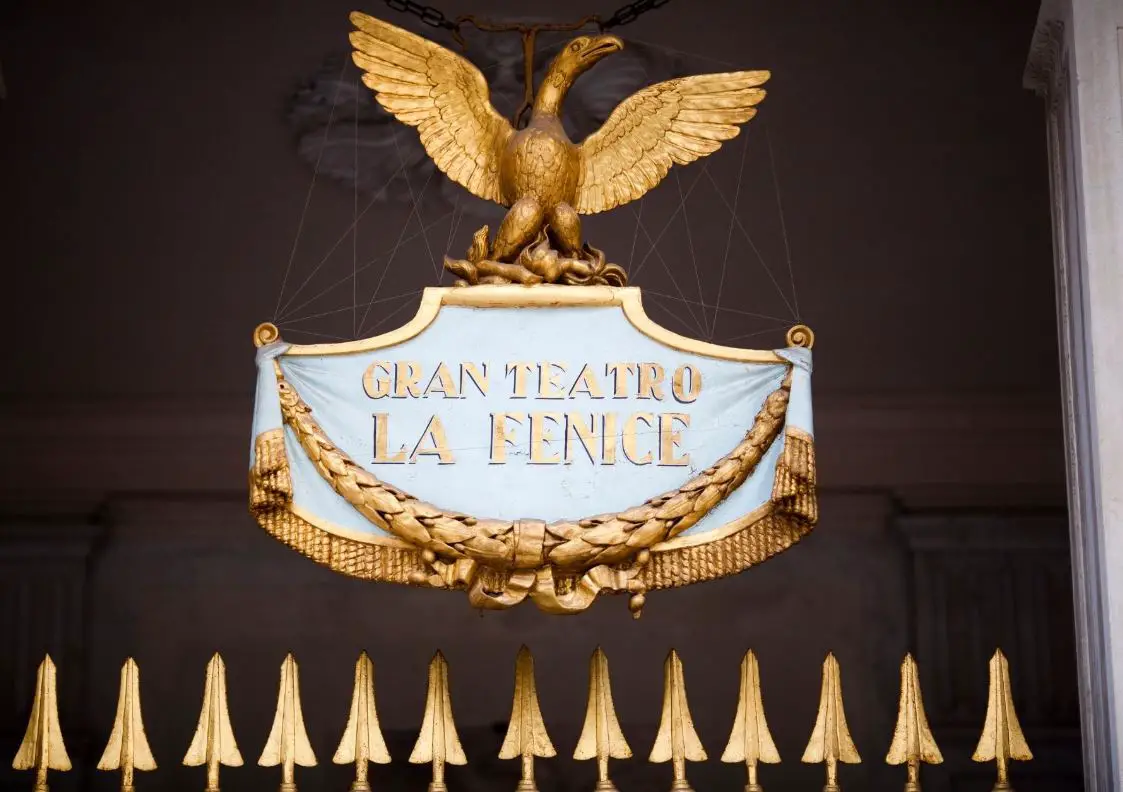
Teatro la Fenice IV/IV
The opera house is magnificently decorated, particularly interesting is the design of the ceiling, which is straight, but through the painter’s work creates the impression of a vaulted space.
The orchestra pit is retractable, allowing a few more rows of seating for concerts.
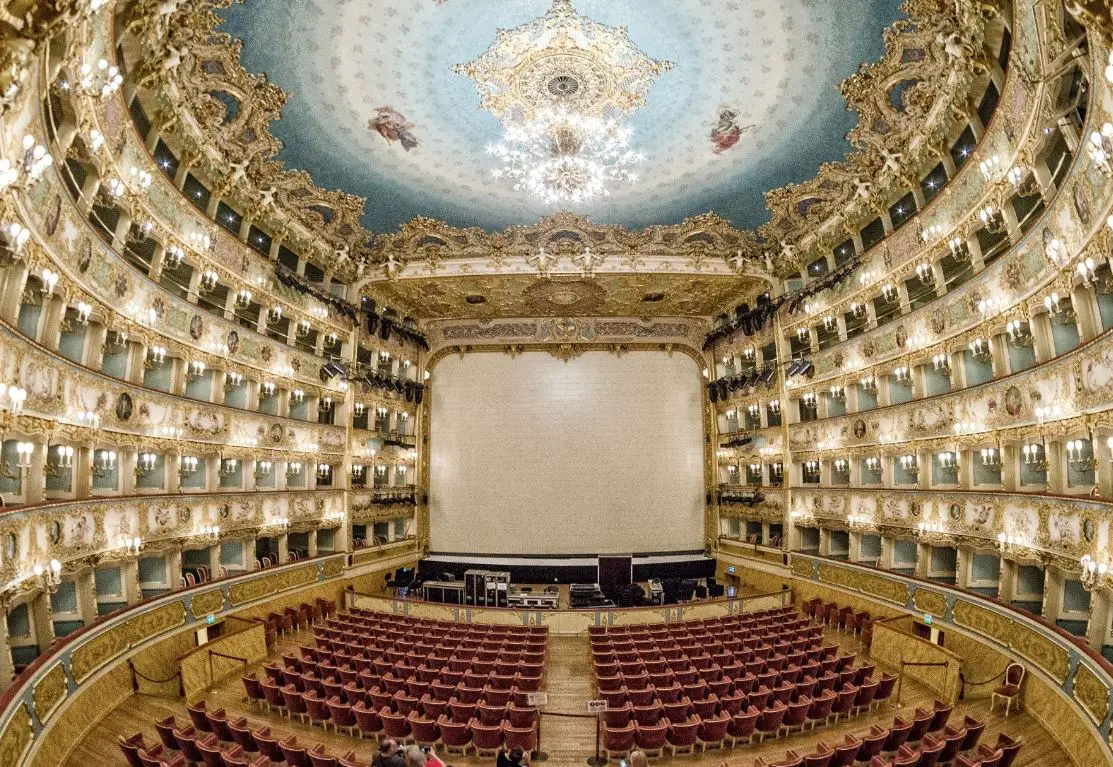
Musica al palazzo
This institution offers opera in a small setting. In a living room or salon an opera is performed like a chamber play, the performers are singers plus an “orchestra” of 3 people. This works excellently and inspires the 20 – 30 visitors who can be seated in the salon. Verdi operas have an important place in the program.
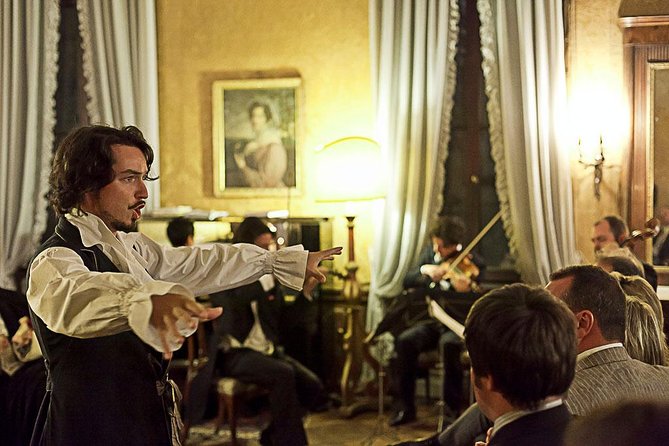
CHURCHES
Basilica San Marco
In his function as Kapellmeister, Monteverdi took special care of the choirs. The excellent acoustics of St. Mark’s Cathedral allowed the choirs to be placed in the room. Listen to the beautiful hymn “Ave maris stella” from the Marian Vespers from Gardiner’s brilliant recording from St. Mark’s Cathedral in 1990.
If you have the opportunity to listen to music in St. Mark’s Basilica, take it.
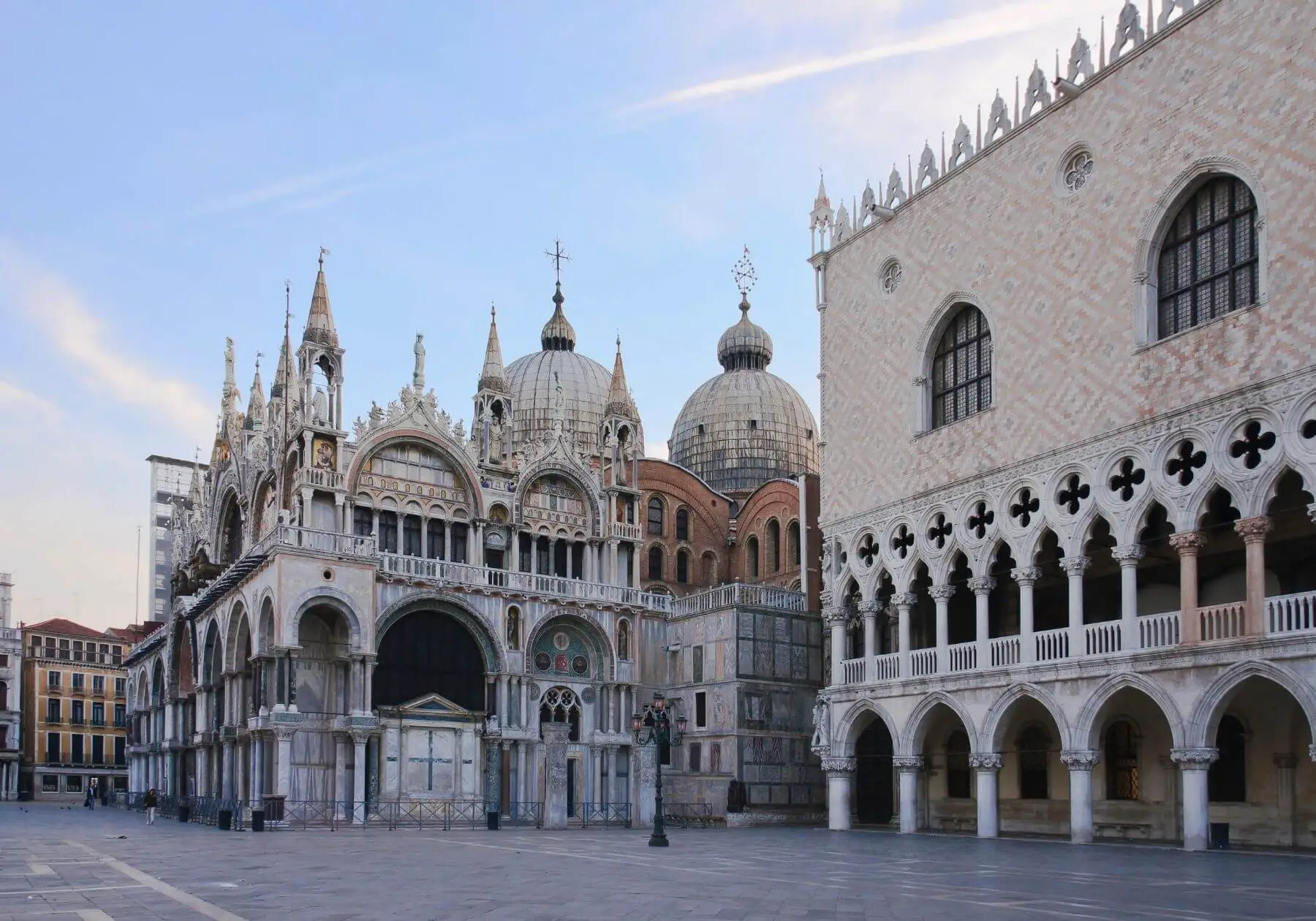
Santa Maria Della Salute
In 1630 Venice lost 50,000 inhabitants to the plague, which was a third of its residents. The Doge vowed to endow a church for the cessation of the plague. This became the magnificent Santa Maria della Salute opposite the Doge’s Palace. Monteverdi wrote a Mass of thanksgiving for it and performed it in the opening of the church.
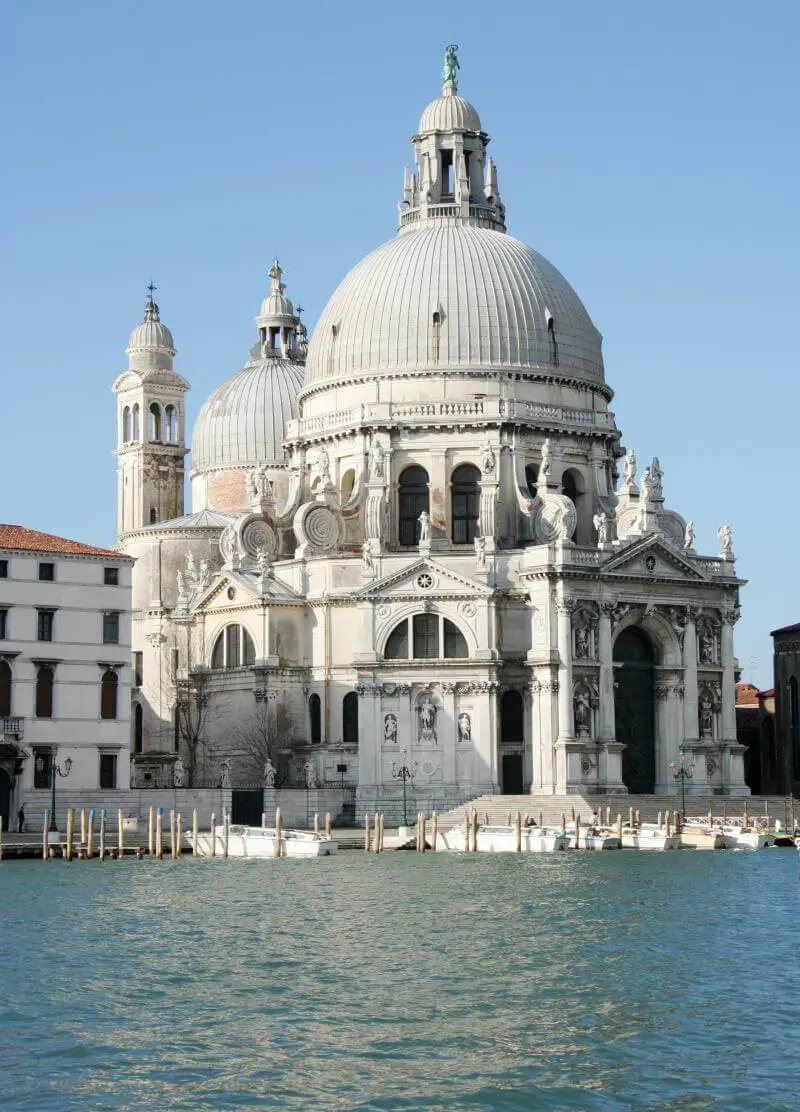
Santa Maria Gloriosa dei Frari
Monteverdi’s tomb is in the church of Santa Maria Gloriosa dei Frari.
Wagner’s visit in Venice in 1861 was only brief. He is disappointed to discover that Mathilde von Wesendonck was pregnant by her husband and that the love affair has come to an end. His dejection was blown away after a visit to Titian’s “Assunta” (the monumental depiction of the Assumption) in the Accademia and he decided to compose his great renunciation opera “Die Meistersinger von Nürnberg”. Meanwhile, the Assunta is no longer in the Accademia, but back in the Basilica dei frari, for which it was created in 1517 and where it can be seen (in restoration).
https://www.basilicadeifrari.it/opere/assunta/
Assunta by Titian:
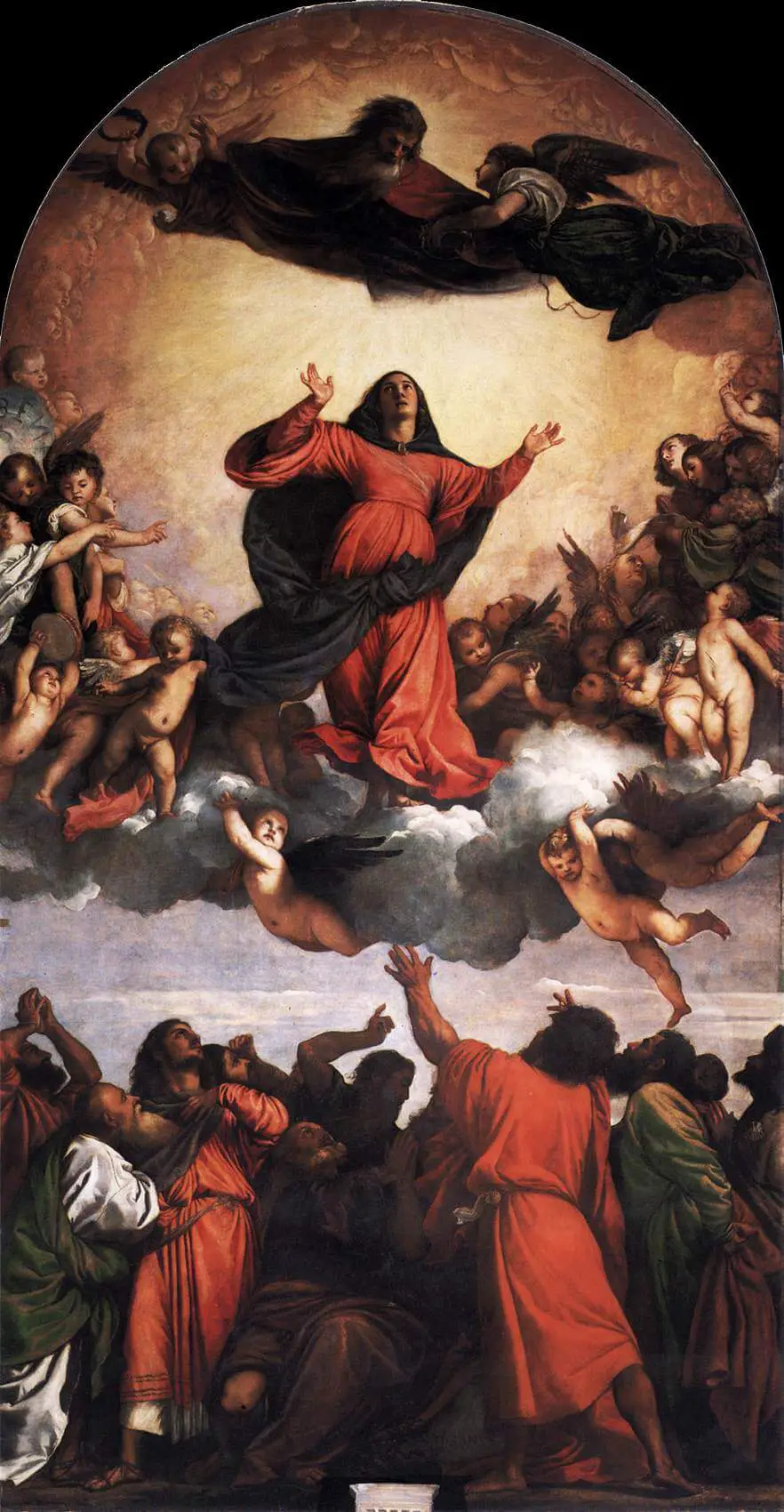
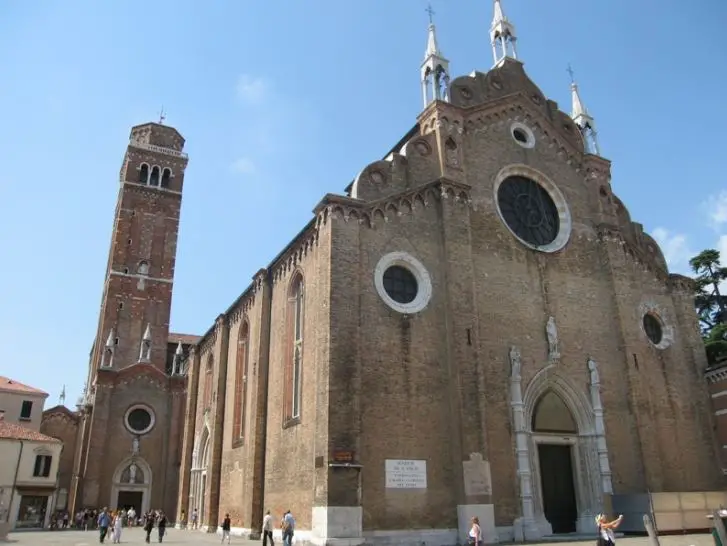
PALAZZI
Palazzo Vendrmin
In the winter of 1882/83, the Wagner family spent several months in the lagoon city. Wagner was in poor health and died in the palazzo on February 13, 1883. In the meantime, the palazzo belongs to the city of Venice and it runs a casino there. There is a small Museo-Wagner in the side wing. In the garden there is a memorial plaque made by Gabriele d’Annunzio.
https://www.casinovenezia.it/it/museo-wagner
Palazzo Vendramin:
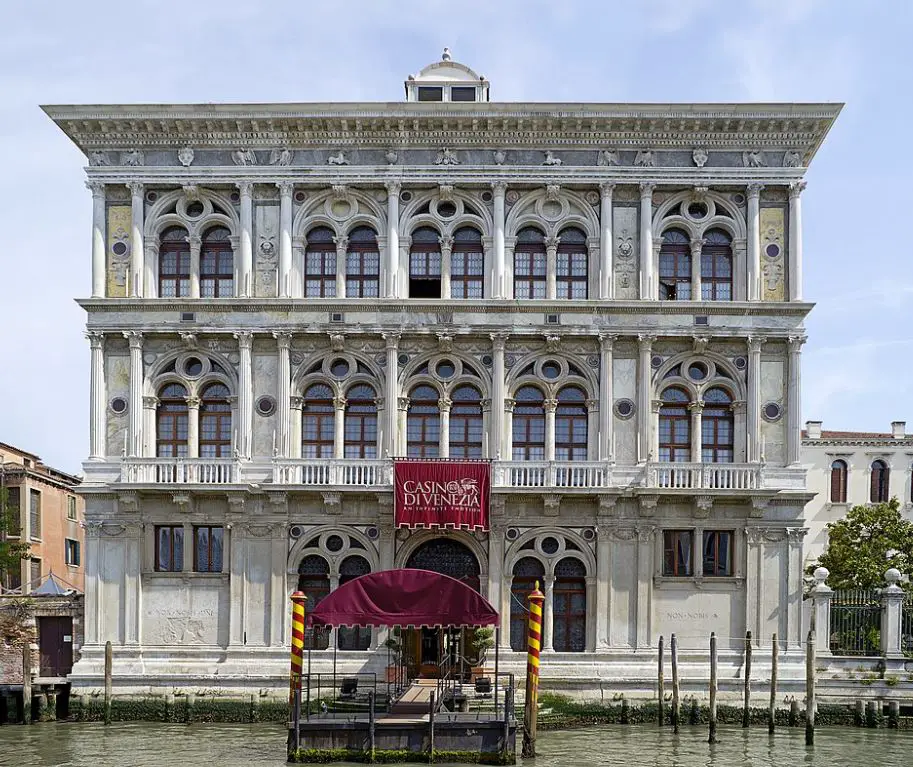
Canaletto’s Painting of the Palazzo Vendramin:
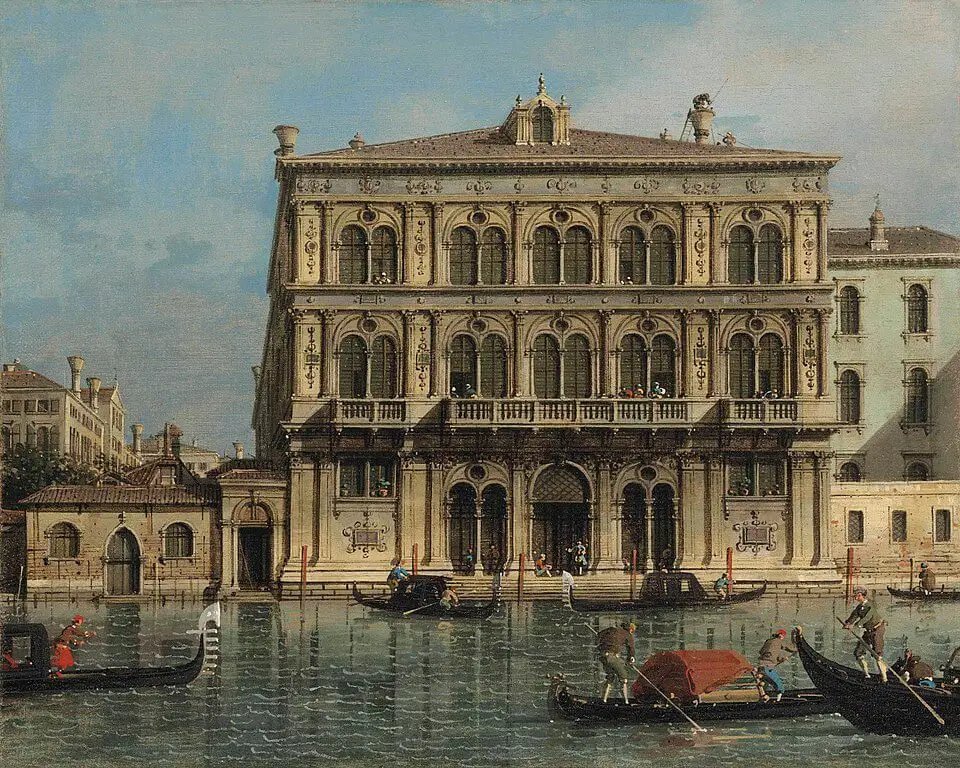
Richard Wagner Museum in Palazzo Vendramin:
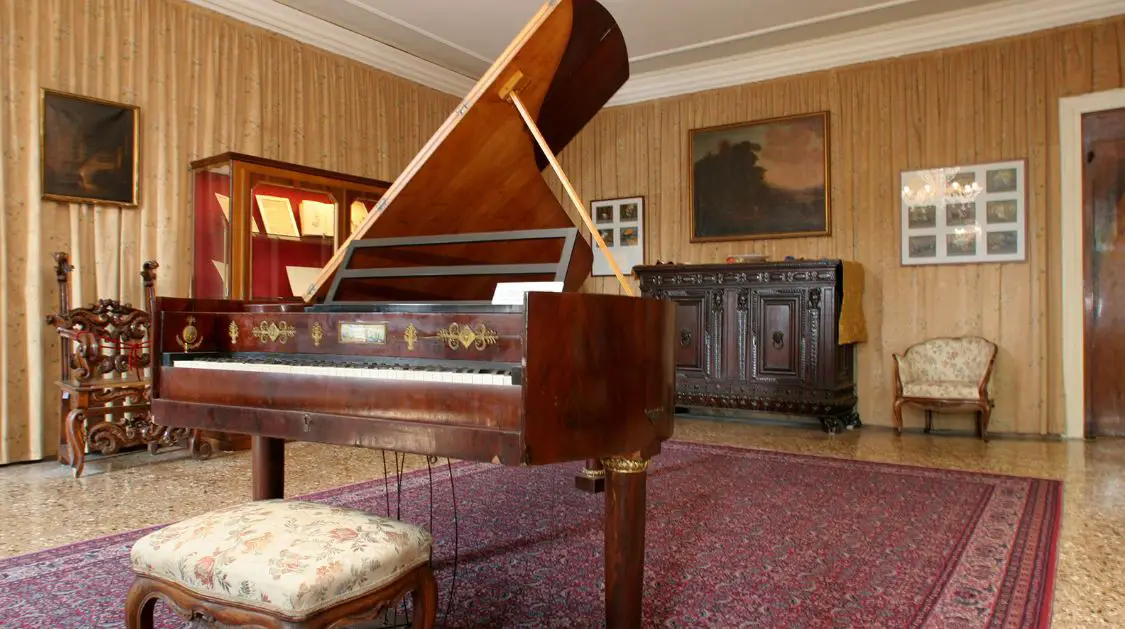
TOMBS AND GRAVES OF FAMOUS MUSICIANS
Claudio Monteverdi
Santa Maria Gloriosa dei Frari
Monteverdi’s tomb is in the church of Santa Maria Gloriosa dei Frari.
Monteverdi’s tomb:
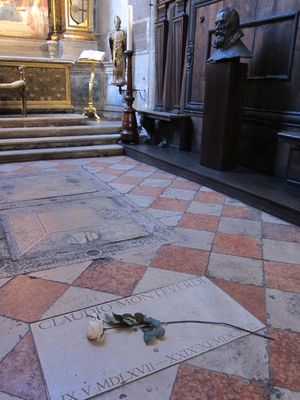
Igor Stravinsky
San Michele Cemetery
At his own request, he was laid to rest next to his wife in this island cemetery in 1971, so that music lovers from all over the world could visit the grave.
Coincidentally (or perhaps not?), a few meters from Stravinsky’s grave stands that of Sergei Diaghilev, the famous impresario of the Ballets russes, who died in Venetian exile in 1929. At the beginning of his career, Stravinsky was commissioned by Diaghilev to compose his most famous works, the ballet The Firebird (1910), Petrushka (1911), Le sacré du printemps (1913) and Pulcinella (1920).
Stravinsky and Diaghilev:

Strawinki’s tomb:
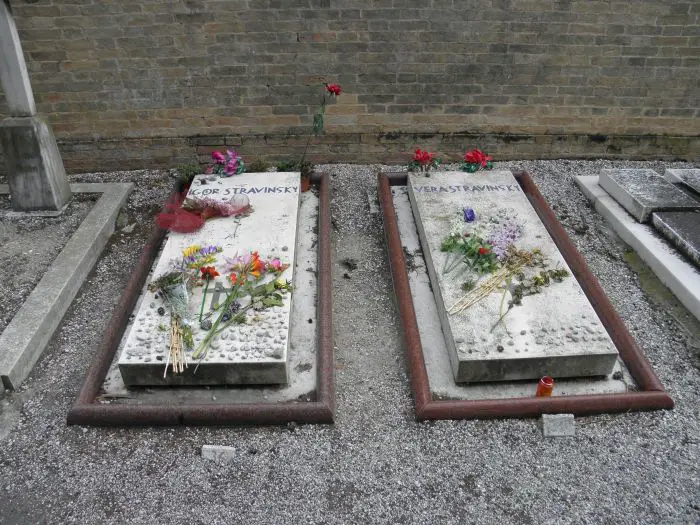
RESTAURANTS
Caffè Lavena
Richard Wagner was often in Venice in his late years and always frequented the Caffè Lavena in the procuratie vecchie, the northern arcades of St. Mark’s Square. He became friends with the Signore Lavena and always came at the same hour accompanied by his private gondolier and sometimes with his children to whom he bought an ice cream there.
Caffè Lavena at St. Mark’s Square:
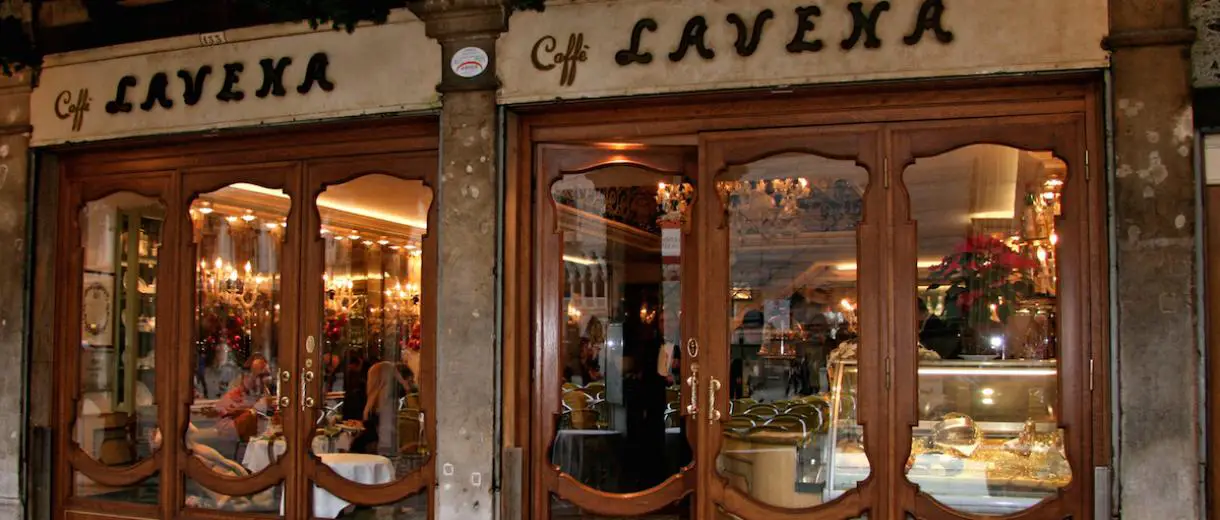
WORKS RELATING TO VENICE
Pur ti miro pur ti godo from "L-incoronazione di poppea"
Monteverdi and the Venetian librettist Busenello chose for this opera an arsenal of role types that became trend-setting. First of all, there is the contrast between the couple of high rank (Nero / Poppea) and that of low rank (Ottone / Drusilla). Furthermore, the comedic characters from the people (the nurses, the servants), the role of the intriguer (Ottavia) and the trouser role of the page are to be mentioned. How close this constellation seems to us to Mozart’s opera “Le nozze di Figaro”, which was composed 150 years later and written by the Venetian da Ponte!
Listen and see sung by Poppea’s travesty amme the enchanting lullaby “Oblivion soave”.
With the famous duet “Pur ti miro, pur ti godo” Monteverdi may have succeeded in creating the first megahit in opera history. Listen to the magical piece.
Overture "il Signor Bruschino" by Rossini
The overture of the one-act opera “Il signor Bruschino” achieved anecdotal fame, in which the second violins have to tap their bows rhythmically on their music stands several times, producing a charming effect. The upscale gentlemen at the music stands, however, were too embarrassed by this effect of the 18-year-old schnoz and refused to perform the tapping sounds, causing a considerable uproar.

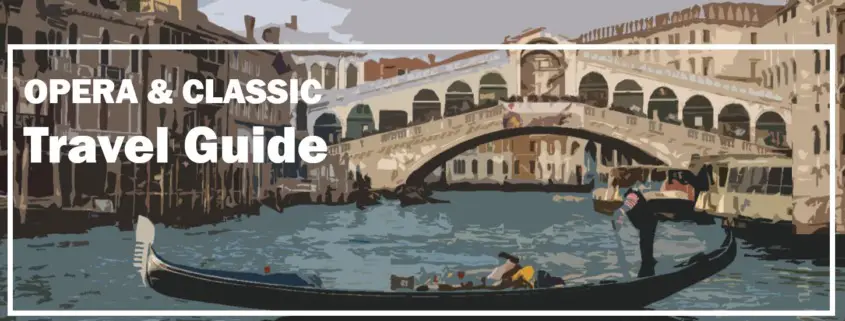


Leave a Reply
Want to join the discussion?Feel free to contribute!